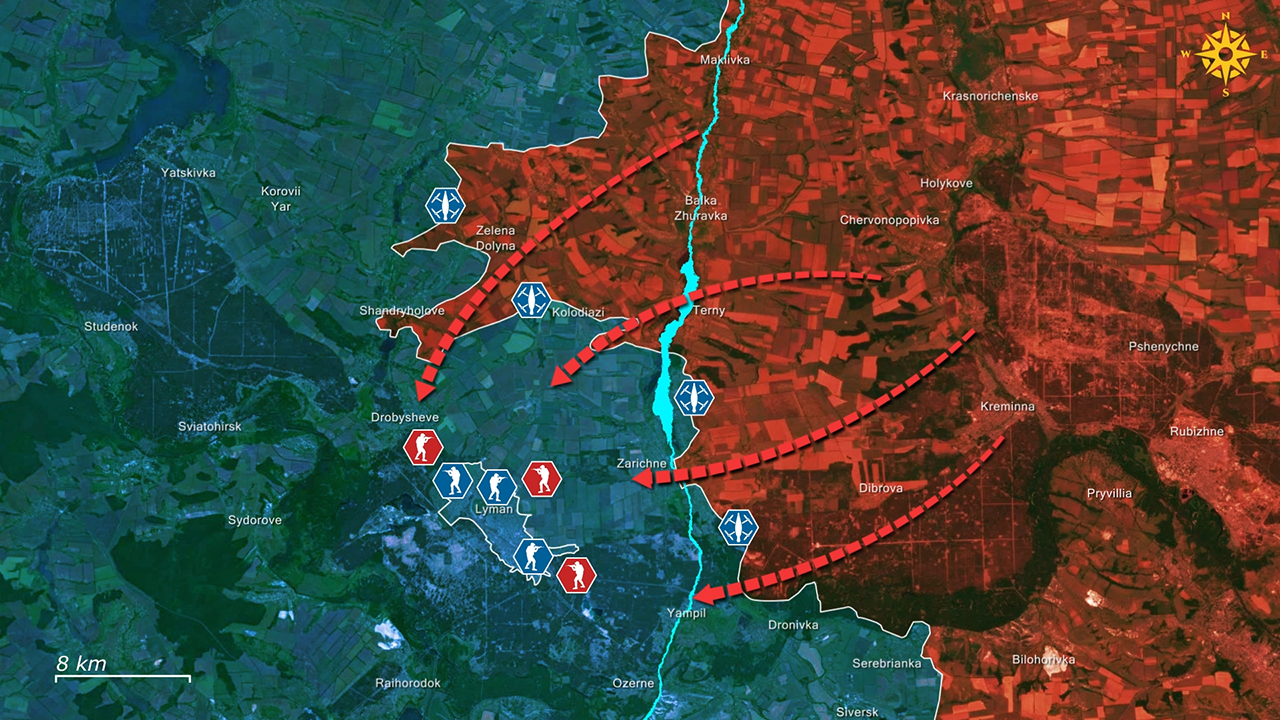Today, there are dangerous updates from the Lyman direction.
Here, Russia's growing concentration of forces around Lyman signals a major shift in this part of the frontline. As the last settlements in front of Lyman are now contested areas, Ukrainian defenders see the danger approaching, and Russian artillery shells landing on the horizon.
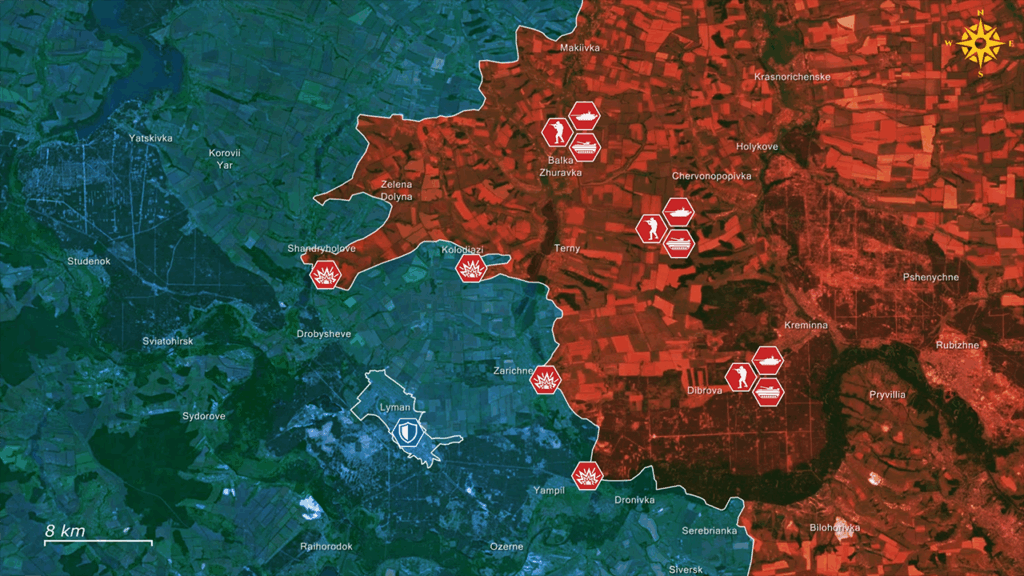
Russian strategic shift to Lyman
After months of stagnation and failures at Pokrovsk and Kostiantynivka, Russia's generals have chosen to reorient their main push to Lyman, where they hope to soon reach terrain that could favor mechanized warfare.
Their operational goal is to reach and capture Lyman and then use it as a springboard for a wider operation to outflank Kramatorsk and Sloviansk from the north.
According to Ukrainian analysts, nearly 90,000 Russian troops, backed by over 300 tanks, 600 armored vehicles, and hundreds of artillery systems, have massed close to the Lyman axis.
Yet, many of these units are formed from prison recruits and freshly mobilized soldiers with little to no training, highlighting Russia's desperation to sustain offensive momentum despite the heavily depleted quality of their manpower.
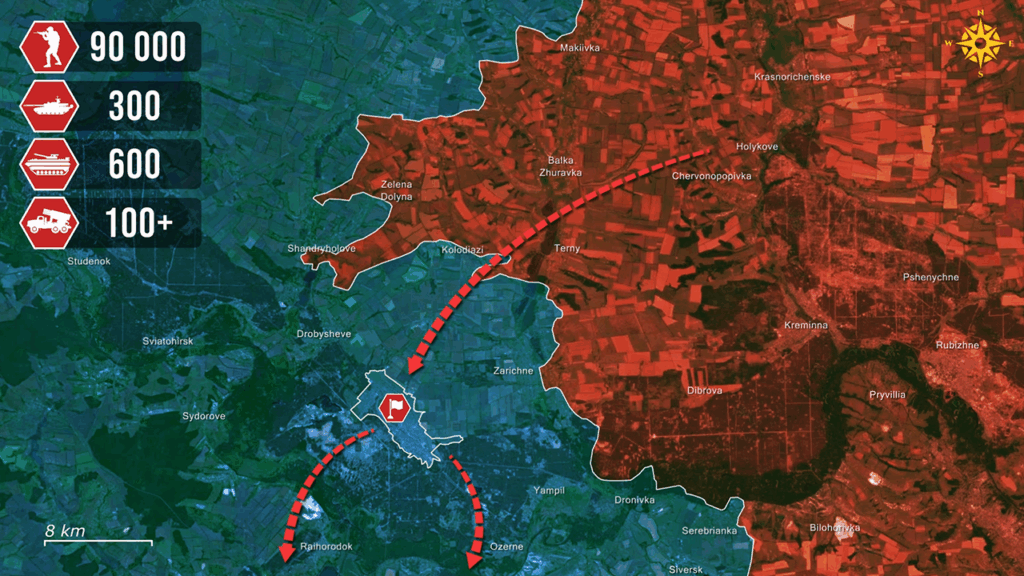
Multi-pronged offensive design
To seize Lyman, Russia is orchestrating a multi-pronged offensive designed to envelop Ukrainian positions from several directions at once.
The attacks northwest of Lyman near Shandryholove, northeast through Kolodiazi, east through Zarichne, and southeast near Yampil and the Sviati Hori forest are not random probes, but a coordinated operational design.
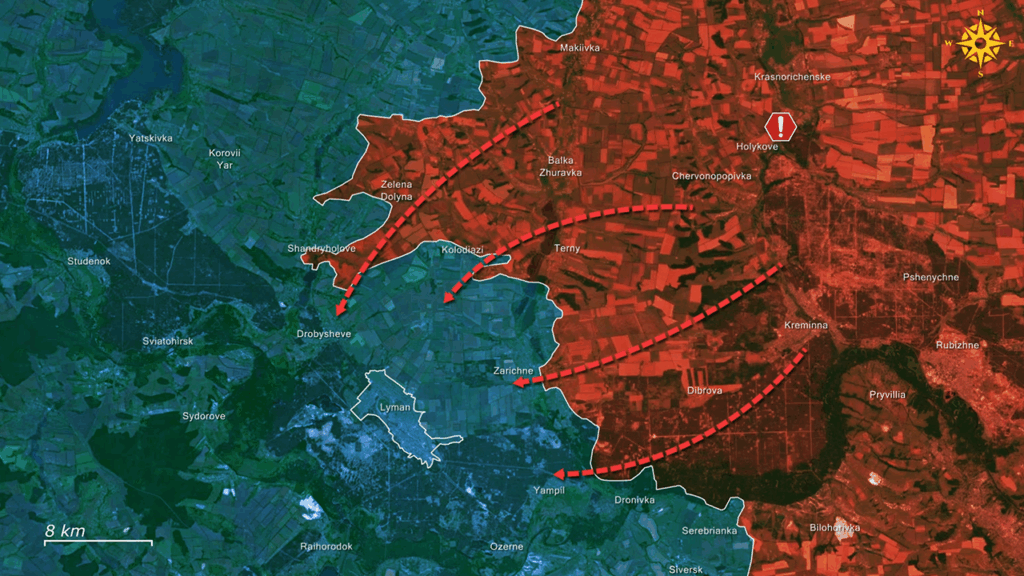
In the north, Russia's bridgehead across the Zherebets River is key, as Russian engineers are rushing to build pontoon bridges to bring armor across. If the Russians can reinforce this bridgehead, they can outflank Lyman from the northwest and cut off supplies moving from Izium.
Through Kolodiazi, the Russians can achieve a potential direct vector of assault on the town itself if they successfully penetrate the Ukrainian defense.
At the same time, the battle for Zarichne threatens to open a direct corridor to the town, as less than ten kilometers of mostly open ground lie between Zarichne and Lyman. Securing this approach and moving forward would let Russian forces consolidate a second crossing over the Zherebets, reducing dependence on a single bridgehead with fragile logistics.
Meanwhile, to the southeast, in Yampil and the Sviati Hori forest, Russian troops are attacking not only to stretch Ukrainian defense lines but also to cut the logistical artery between Lyman and Sloviansk.
By pressuring both from the north and southeast simultaneously, Russian forces aim to create a pincer that will close around Lyman before the year's end.

Strategic implications of Encirclement
An encirclement that could produce even more problems for the Ukrainians, as it will also expose Siversk to attacks from behind. Each Russian axis against Lyman complements the other, forming a coordinated maneuver to collapse Ukrainian defenses in sequence rather than only head-on.
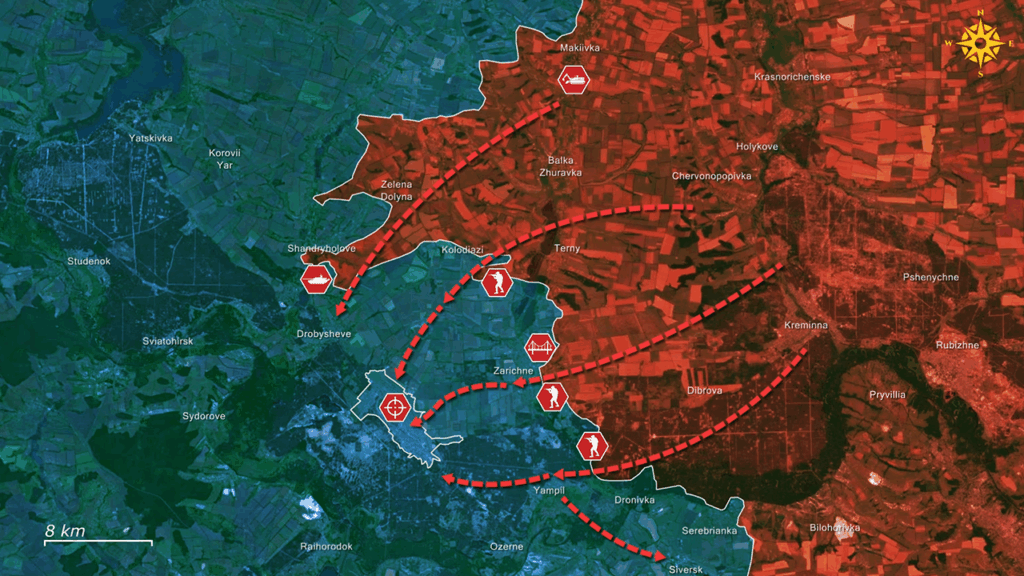
Offensive enters decisive stage
After three years of grinding assaults and failed advances, Russian forces appear ready for the long-promised final push, as Lyman stands in great danger. Increased pontoon crossings, heavy armor buildup, and repositioned artillery show that shaping operations are over and the offensive is entering its decisive stage.
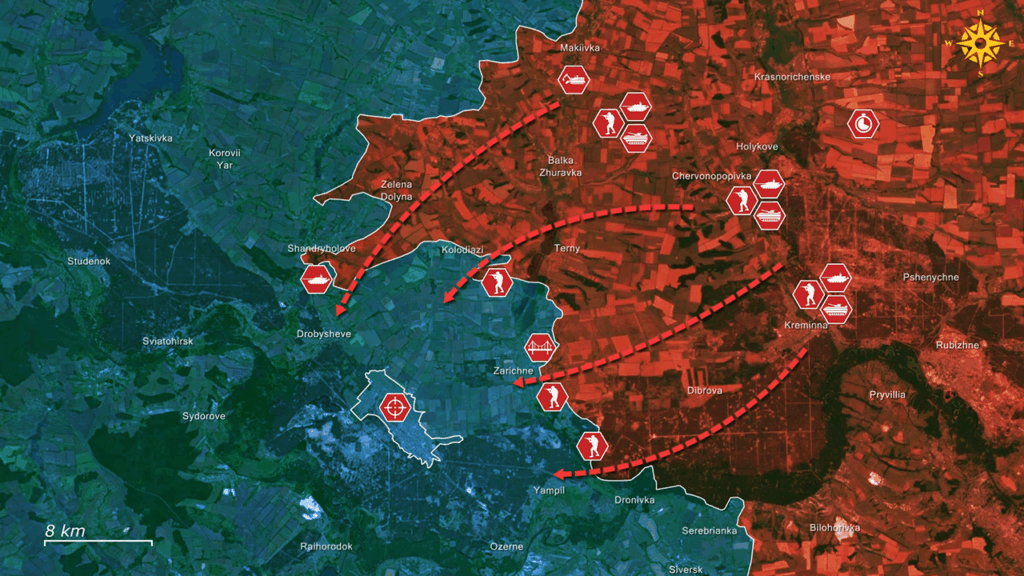
Ukrainian defenses rely heavily on the natural barriers of the forest and the Zherebets River with its branches, which have so far limited Russian armor's maneuverability, making it ever so crucial that these Russian pontoon crossings stay offline, and the bridges under Ukrainian fire control.
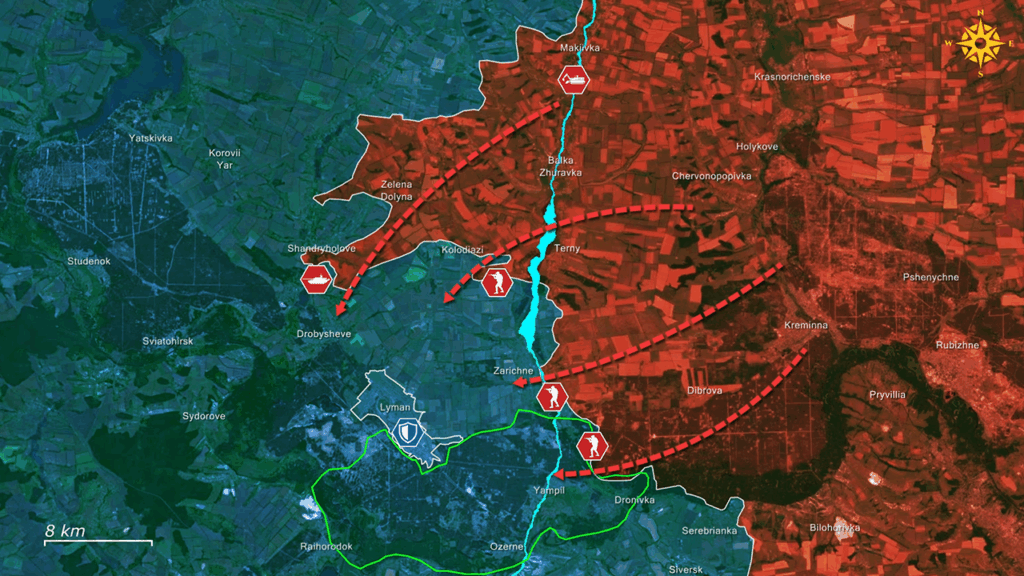
Ukrainian counterstrikes
In the meantime, Ukrainian defenders are hitting back relentlessly, as the Russian buildup and increase of activity have led to easier opportunities for the Ukrainians to detect them.
Drone operators from the Ukrainian 93rd Mechanized Brigade have published a video showing the recent destruction of four Russian artillery pieces with FPV drones, hunted down one after another, despite being hidden in dugouts and under extensive camouflage.
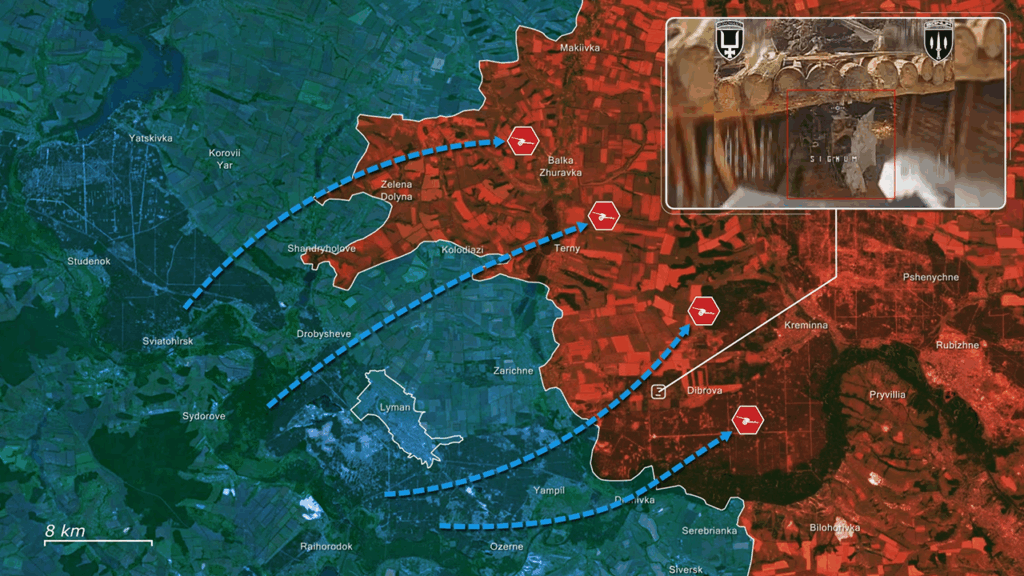
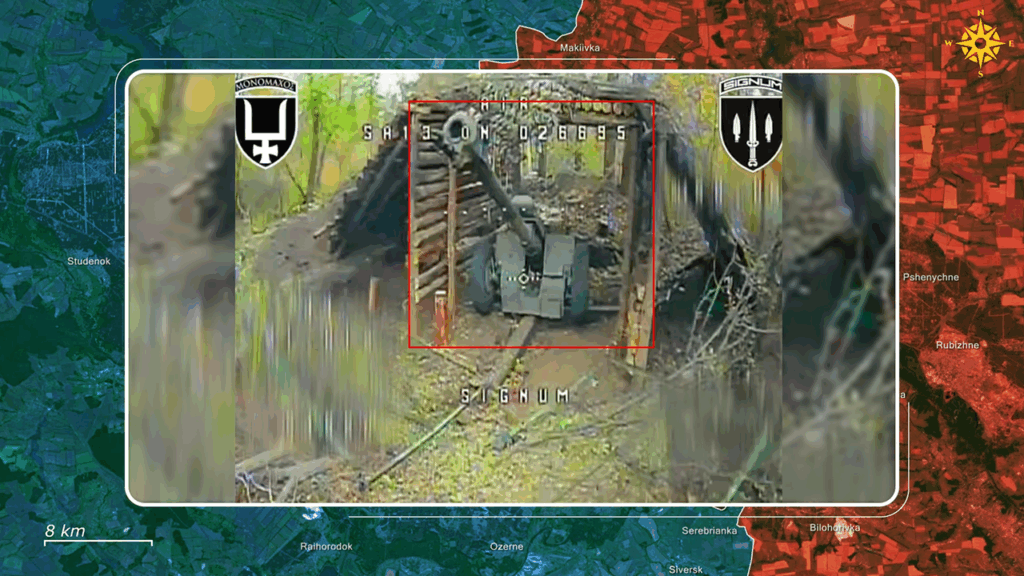
This follows up Ukrainian strikes on Russian pontoon bridges, armored reserves, and North Korean self-propelled guns in the area, all aiming to prevent the Russian concentration of forces and fire support as they prepare to pull the final trigger of their offensive.

The critical river barrier
Overall, Russia's push on several vectors around Lyman is about to be reinforced by more troops and equipment, putting the town in danger.
However, the terrain still majorly favors Ukraine, as one Ukrainian drone operator explained that the only thing that does not allow Russians to attack with armored vehicles is the river.
If the Russians can overcome the river barrier and bring armor across, that Ukrainian advantage will disappear, and the battle for Lyman will begin.
In our regular frontline report, we pair up with the military blogger Reporting from Ukraine to keep you informed about what is happening on the battlefield in the Russo-Ukrainian war.




